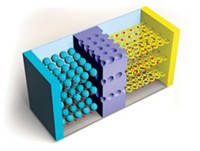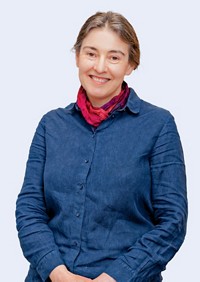Advertisement
Grab your lab coat. Let's get started
Welcome!
Welcome!
Create an account below to get 6 C&EN articles per month, receive newsletters and more - all free.
It seems this is your first time logging in online. Please enter the following information to continue.
As an ACS member you automatically get access to this site. All we need is few more details to create your reading experience.
Not you? Sign in with a different account.
Not you? Sign in with a different account.
ERROR 1
ERROR 1
ERROR 2
ERROR 2
ERROR 2
ERROR 2
ERROR 2
Password and Confirm password must match.
If you have an ACS member number, please enter it here so we can link this account to your membership. (optional)
ERROR 2
ACS values your privacy. By submitting your information, you are gaining access to C&EN and subscribing to our weekly newsletter. We use the information you provide to make your reading experience better, and we will never sell your data to third party members.
Nobel Prize
Video: Lithium-ion batteries are (finally) Goodenough
Watch why John B. Goodenough, M. Stanley Whittingham, and Akira Yoshino are ‘very deserving’ of this year’s Nobel Prize in Chemistry
by Kerri Jansen
October 10, 2019
Nobel season wouldn’t be complete without our annual explainer video of the chemistry prize. This year the call from Sweden went to lithium-ion battery pioneers John B. Goodenough, M. Stanley Whittingham, and Akira Yoshino. Charge up your knowledge of the batteries that power our portable gadgets and electric vehicles by watching our latest video. And don’t forget to round out your Nobel newsfeed with all our fantastic coverage.
For even more with John Goodenough, listen to our recent conversation with him in our Stereo Chemistry podcast.
Subscribe to our YouTube channel to catch all our chemistry news videos.
The following is the script for the video. We have edited the interviews within for length and clarity.
Kerri Jansen: At long last, the lithium-ion battery has achieved Nobel recognition.
John B. Goodenough, M. Stanley Whittingham, and Akira Yoshino won the 2019 Nobel Prize in Chemistry for their contributions to the lightweight batteries that power our smartphones, laptops, electric vehicles, and other wireless gadgets.
Collectively, these scientists figured out how to harness volatile lithium to make a safe, efficient, and powerful energy storage technology.
To understand why each of their contributions was important, let’s start with the basics of how batteries work.
A battery is made of two electrodes connected to a circuit and separated by an electrolyte. A lithium-ion battery generates energy by moving lithium ions from one electrode to the other, drawing electrons, and thus electrical current, through an external circuit and powering our devices. In rechargeable batteries, the process can also be reversed.
But as simple as that may sound, it’s difficult to make batteries that are both safe and able to store a lot of energy.
Scientists have long had their eye on lithium as a potential battery material because it’s lightweight, and you can fit a lot of atoms into a small battery. But lithium is also highly reactive and hard to work with.
The work of these three laureates tamed that reactive element to make it useful for the powerful batteries that are everywhere today.
That story starts with Stan Whittingham. In the 1970s, his team at what was then called Exxon made the first rechargeable lithium-based battery. They used titanium disulfide as a cathode and metallic lithium as an anode.
Titanium disulfide is a layered material that lithium ions can move into and out of easily. Remember, you need those ions to move for the battery to work.
Stan’s battery operated at 2.5 V, an improvement over other batteries of the day. But scientists knew they could do better.
Enter John Goodenough, who, at 97, has the distinction of being history’s oldest Nobel laureate. John knew about Stan’s work with titanium disulfide cathodes and predicted that a metal oxide cathode, instead of a metal sulfide one, would enable more powerful batteries.
His group at Oxford University demonstrated that a battery using a cathode made from lithium cobalt oxide, another layered material, could produce as much as 4 V. That was a significant jump over Stan’s 2.5 V battery.
The final piece of the battery puzzle came from the lab of Akira Yoshino in Japan, who found that lithium ions could also slip in and out of petroleum coke, a carbon-rich material derived from oil refining. That discovery enabled scientists to replace the reactive lithium anode with this safer material. In 1985, Akira’s group at Asahi Kasei used all these advances to assemble the first commercially viable lithium-ion battery. A version of this battery first entered the market in 1991. Since then, lithium-ion batteries have revolutionized our lives.
The technology has enabled not just smartphones and other portable gadgets but the development of long-range electric vehicles and storage of energy in the electrical grid. As the Nobel Prize announcement highlighted, lithium-ion batteries are increasingly being used to store energy from renewable sources like solar and wind power, helping to reduce the world’s reliance on fossil fuels.
To get a sense of how these breakthroughs have impacted the chemistry community, we spoke with Clare Grey, an electrochemist and powerhouse in battery research. She also studied with John Goodenough and later worked with Stan Whittingham.
Clare Grey: I’m very delighted by this award. And I think the three people are very deserving. I think it’s great for the field and great for promoting the awareness of how science underpins transformation and society.
Kerri: And Clare says she’s eager to see where the field of battery research goes next, as scientists work to make batteries even more powerful and lessen the environmental impact of manufacturing them.
Clare Grey: We need to do the fundamental science to make the next inventions that are going to be needed to reduce CO2. And so John, Stan, and Akira did that. But now we need the next generation of people.
Kerri: Chemists have been clamoring for these lithium-ion battery pioneers to win the Nobel for years now. Were you surprised to hear about this year’s award? Let us know in the comments.
And to hear more from John Goodenough, Stan Whittingham, and other chemists who are developing the next generation of energy storage devices, listen to C&EN’s recent podcast episode. We’ll include a link to the episode in this video’s description.




Join the conversation
Contact the reporter
Submit a Letter to the Editor for publication
Engage with us on Twitter